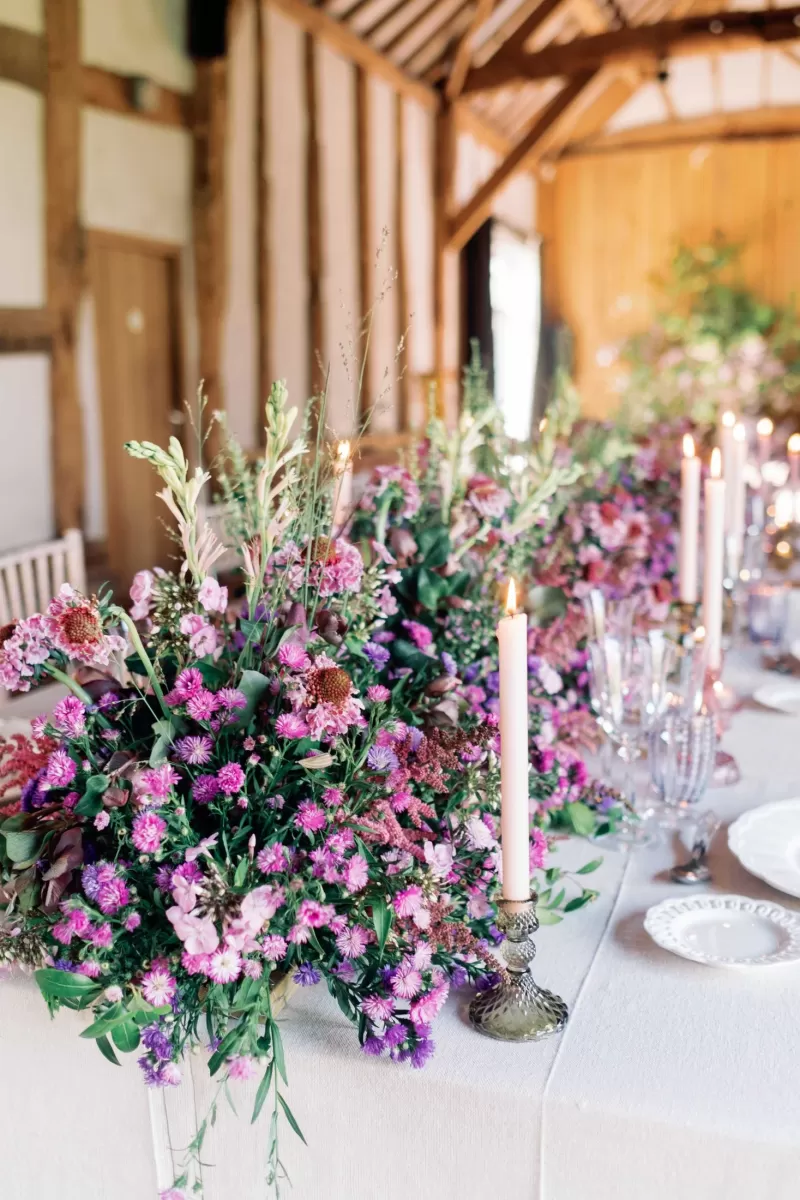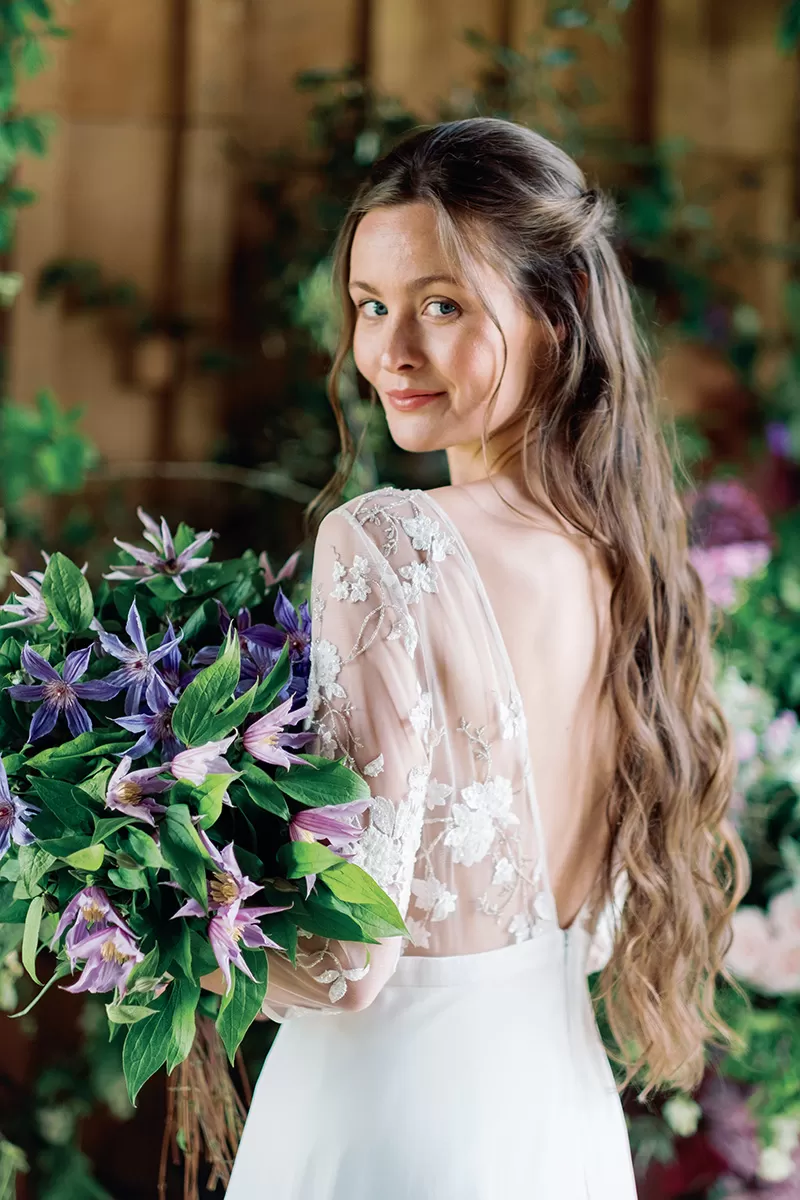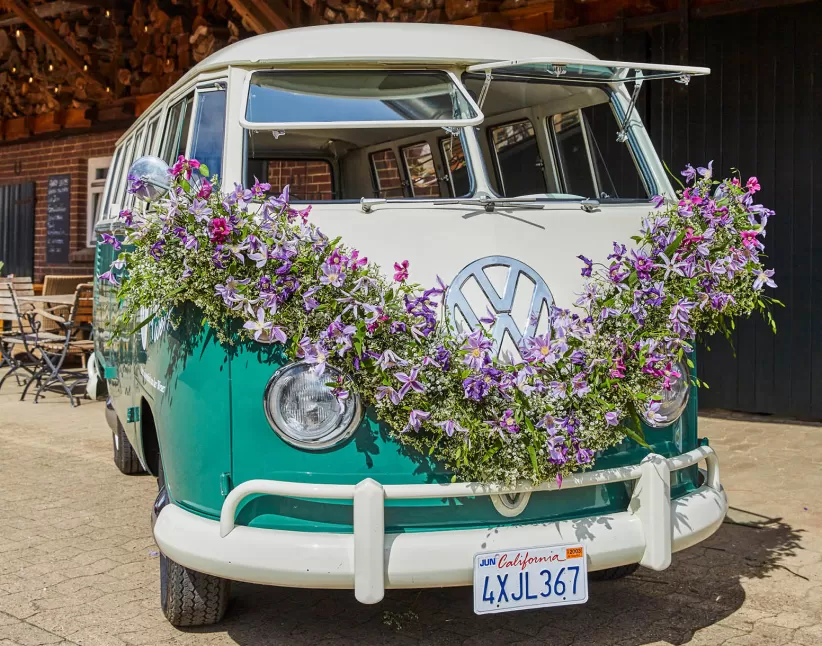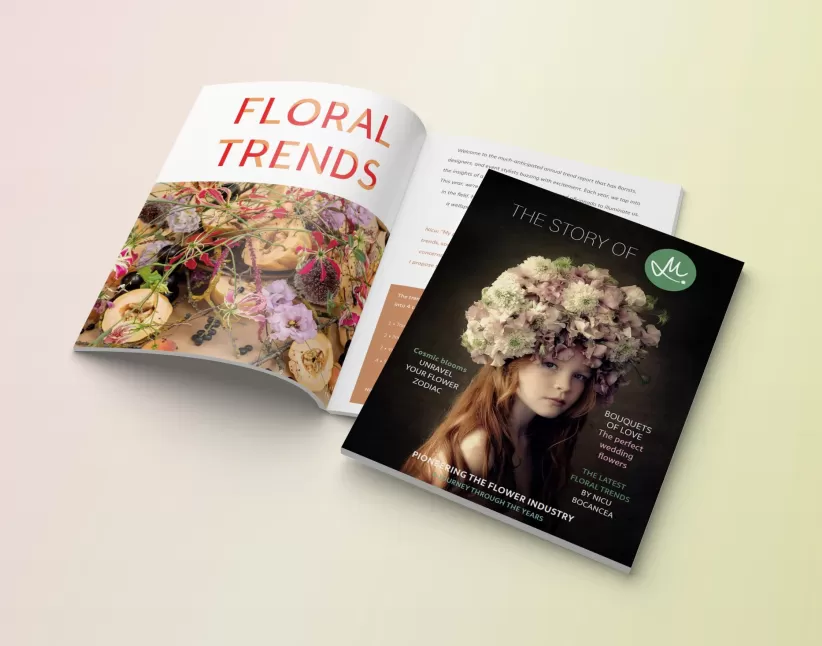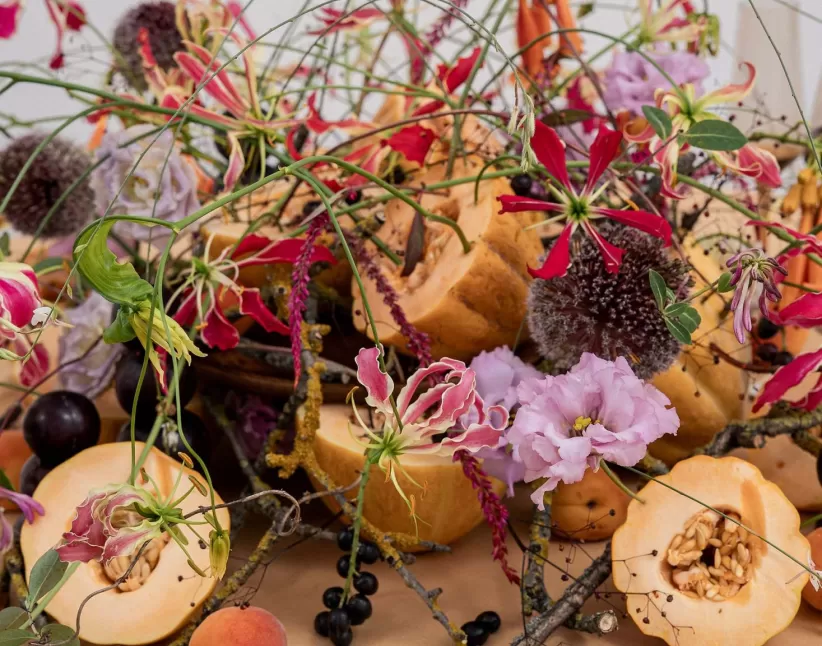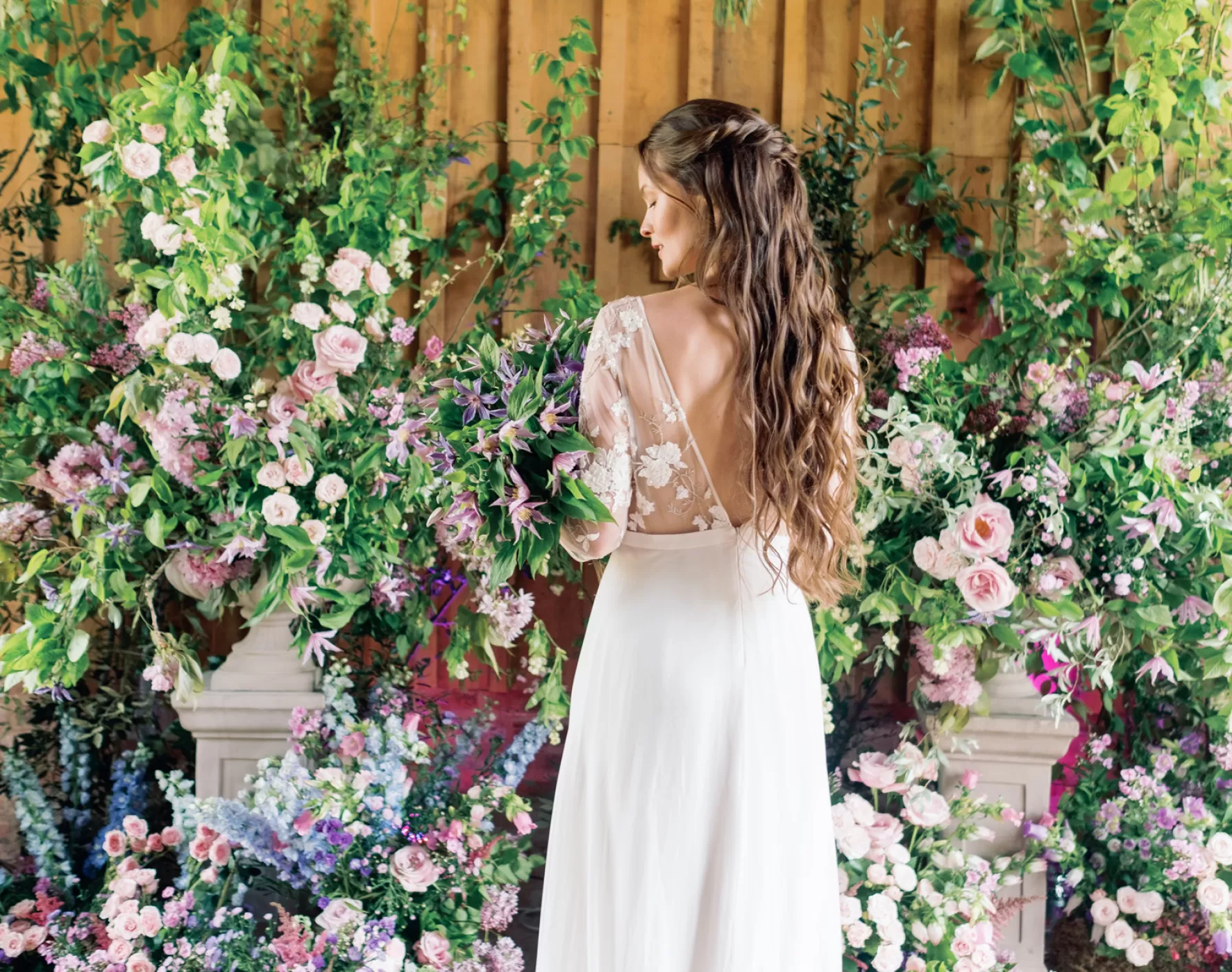
Meet Sabine Darrall
Sabine Darrall is a renowned wedding and event florist with a career spanning over four decades. Through workshops, Sabine inspires emerging florists to blend their artistic vision with environmentally friendly practices. Her passion, innovative approach, and down-to-earth nature have established her as a prominent figure in the industry.
Sabine’s expertise lies in creative installations and event designs, all infused with a profound commitment to sustainability. Currently, Sabine divides her time between managing a thriving floral design business and imparting her extensive knowledge through floral workshops. All of this takes place at her organic farm in Herefordshire.
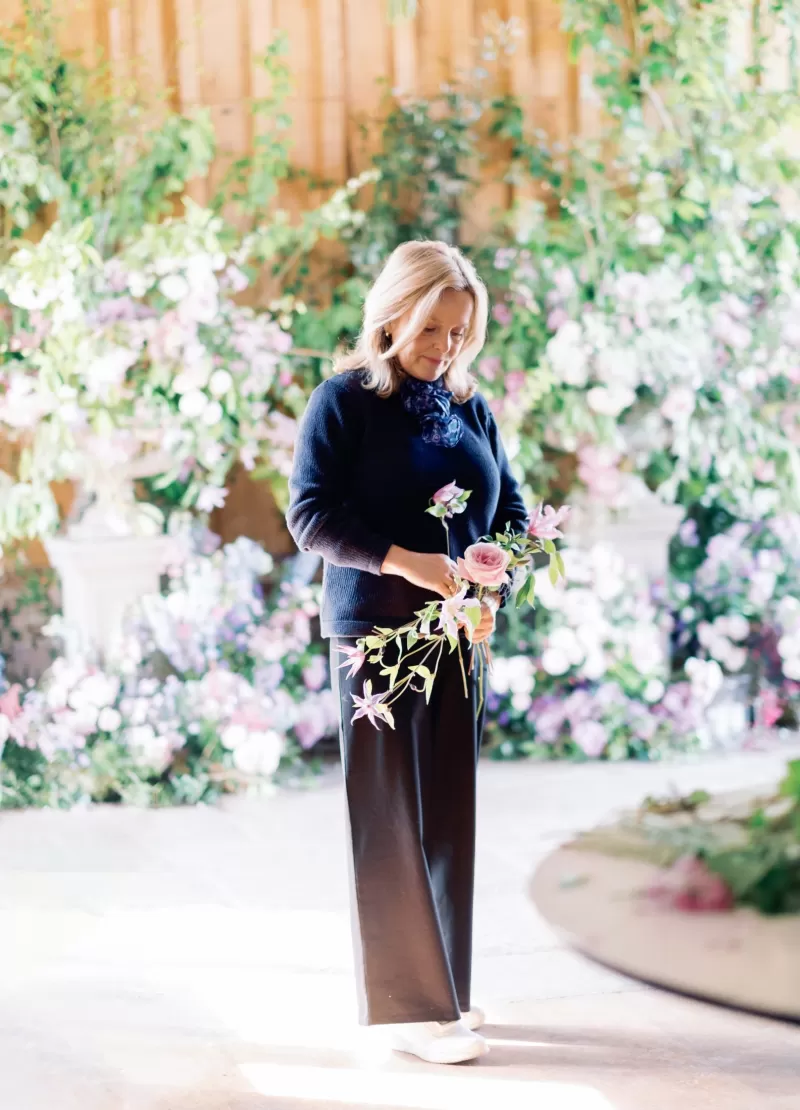
”I try not to follow trends, my goal is to create designs that are timeless.
An eco-friendly bridal workshop
Flowers symbolise love, whether it’s a classic, bohemian, or extravagant theme; using flowers emphasises the love of the couple. For Sabine Darrall, this provided ample inspiration to organise a three-day bridal workshop, all centred around environmentally friendly practices. She focused on bringing the vibrant beauty of early summer into the designs reflected by a palette of amethyst, plum, mauve, pink and lilac.
The workshop was held at Hellens, a historic Manor House in the beautiful Hertfordshire countryside and attended by professional florists from the UK and Europe. Together they created a range of beautiful wedding flowers which were styled and photographed by fine art photographer Emma Pilkington in the romantic gardens and grand barn. From beautiful bridal bouquets consisting of only Clematis Amazing® to creations with Aster, Scabiosa, Astilbe, and Delphinium; this course was not only aesthetically pleasing but also ecologically responsible.
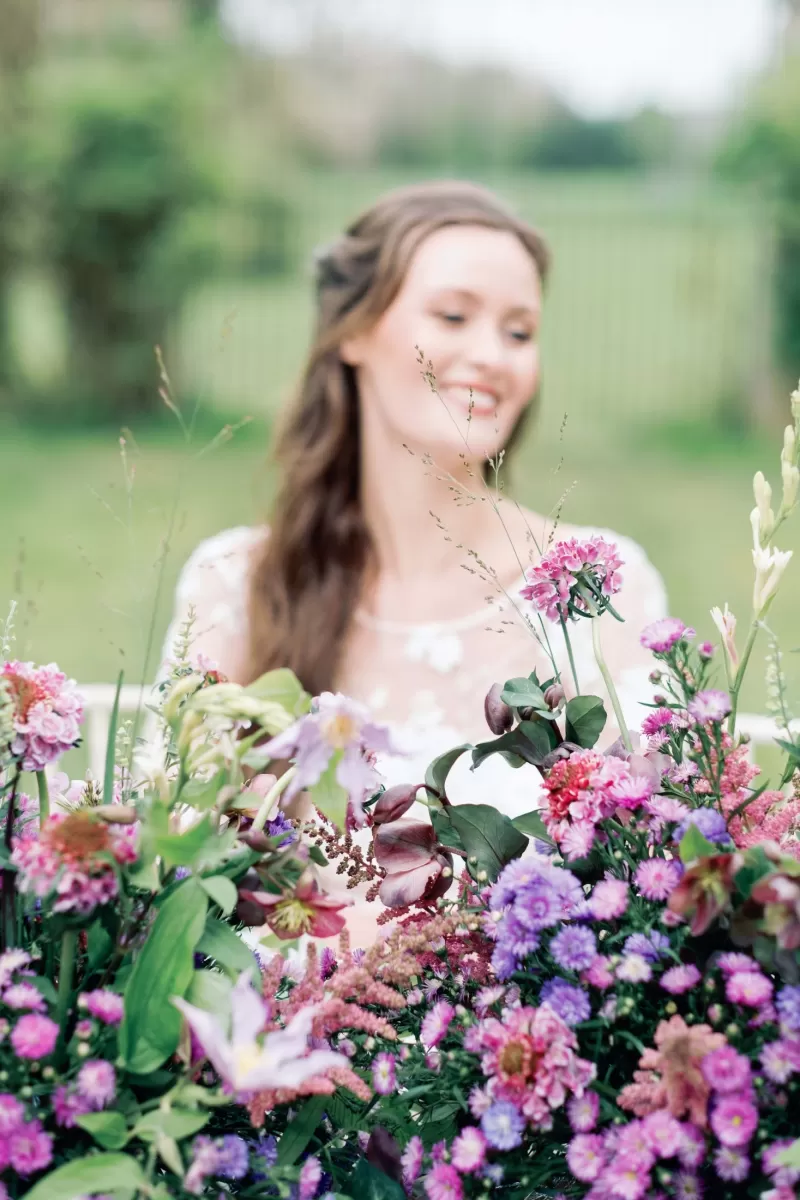
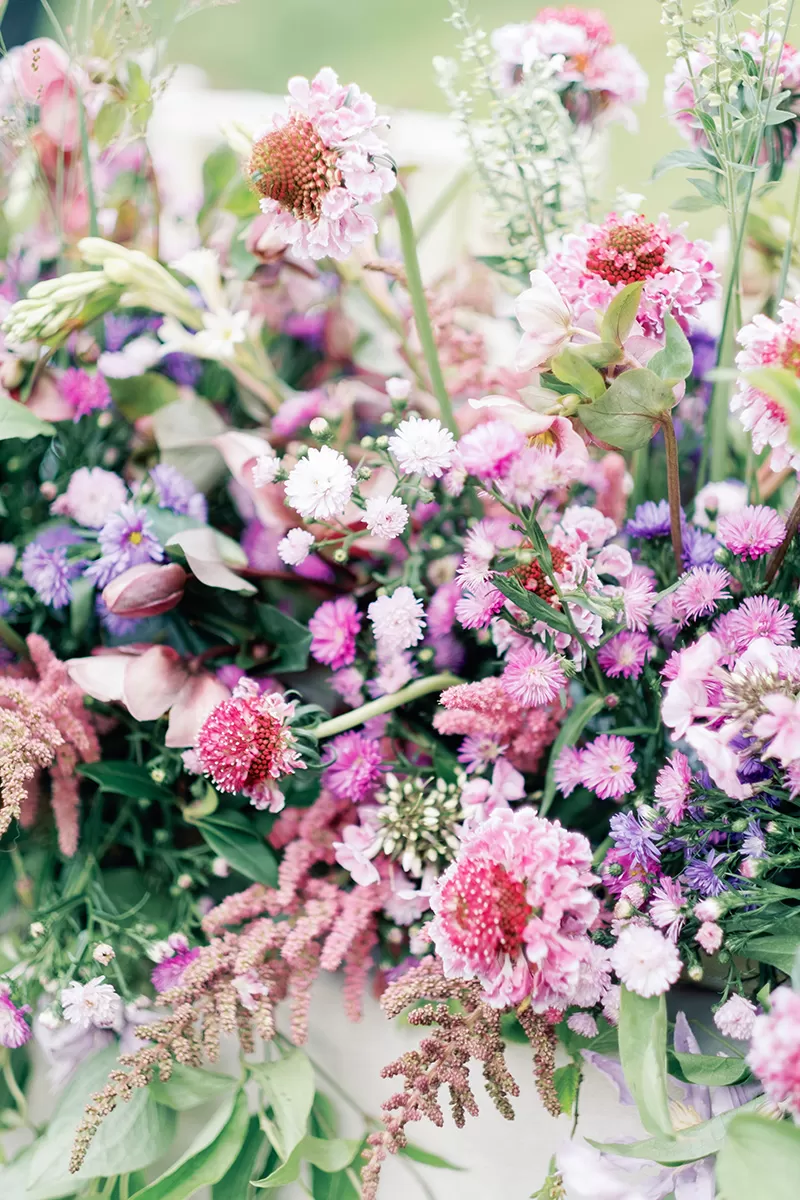
Always keep learning
Whether you are new to the craft or have been in the industry for years, it is crucial to keep learning and growing. Staying up to date with the latest trends and techniques is essential to keep your creations fresh and relevant. By expanding your skills, you enable yourself to master various styles and techniques, elevating your work to new heights.
Not only can you view the images of this workshop, but you can also get hands-on with creating a sustainable floral table runner using this tutorial!
”The flower selection from Marginpar was superb and the attendees were particularly impressed with the quality and longevity.
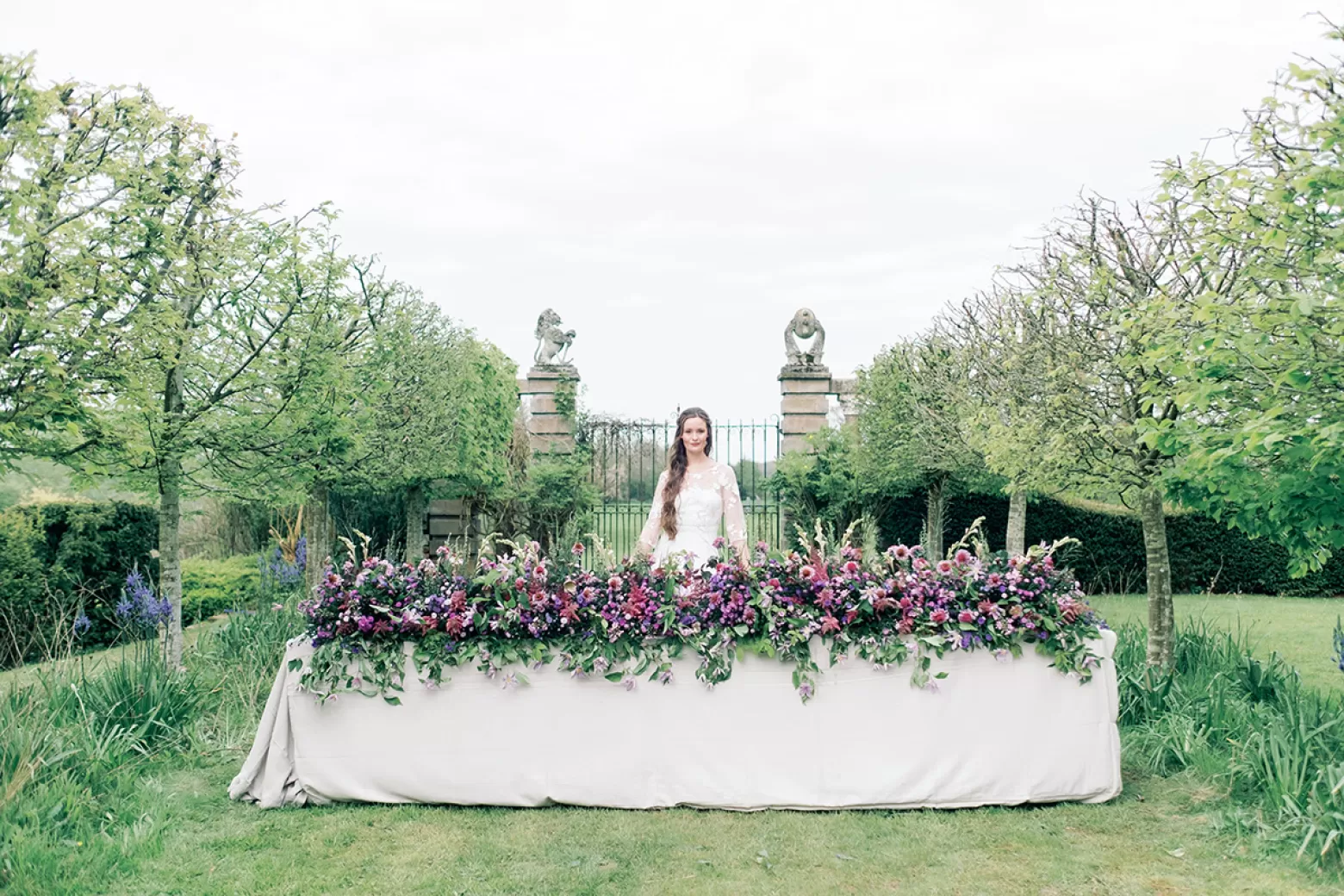
Step by step sustainable floral table runner
What do you need:
- Lightweight wood plank +/- 1.80 meters
- Wire netting
- Oasis FibreFloral™ Design Media (plastic free)
- Compostable bags
- Staple gun
- Osmanthus foliage
- +/- 80 stems of the Clematis Amazing® series
- +/- 60 x Scabiosa Focal Scoop™ Bicolor Pink
- +/- 60 x Panicum Heavy Metal
- +/- 80 x Scutelleria 'Tinkerbell'
- +/- 80 x Helleborus Moondance
- +/- 20 x Polianthes Elsa Blush
- +/- 40 x Phlox Pink Eyes
Step 1
Take 7 blocks of Oasis FibreFloral™ and place each one within a compostable bag. This prevents water drips and makes it easier to insert the flower stems later.
Step 2
Position the foam blocks on the wood plank. Lay the plank on a flat surface and arrange the compostable bags with the foam blocks evenly spaced along the length of the wood plank.
Step 3
Cover the entire arrangement, including the compostable bags and foam blocks, with a layer of wire netting. Use a staple gun to firmly secure the wire netting to the wood plank, ensuring the foam blocks are held in place.
Step 4
Start by inserting a layer of Osmanthus foliage into the wire netting. This covers the mechanics and serves as the base for the design. Add a layer of Aster, then layers of Astilbe, Polianthes, Scabiosa, Helleborus, Panicum grass, Phlox, Scutellaria and Clematis. Finish by adding more Clematis stems to trail down the front of the table.
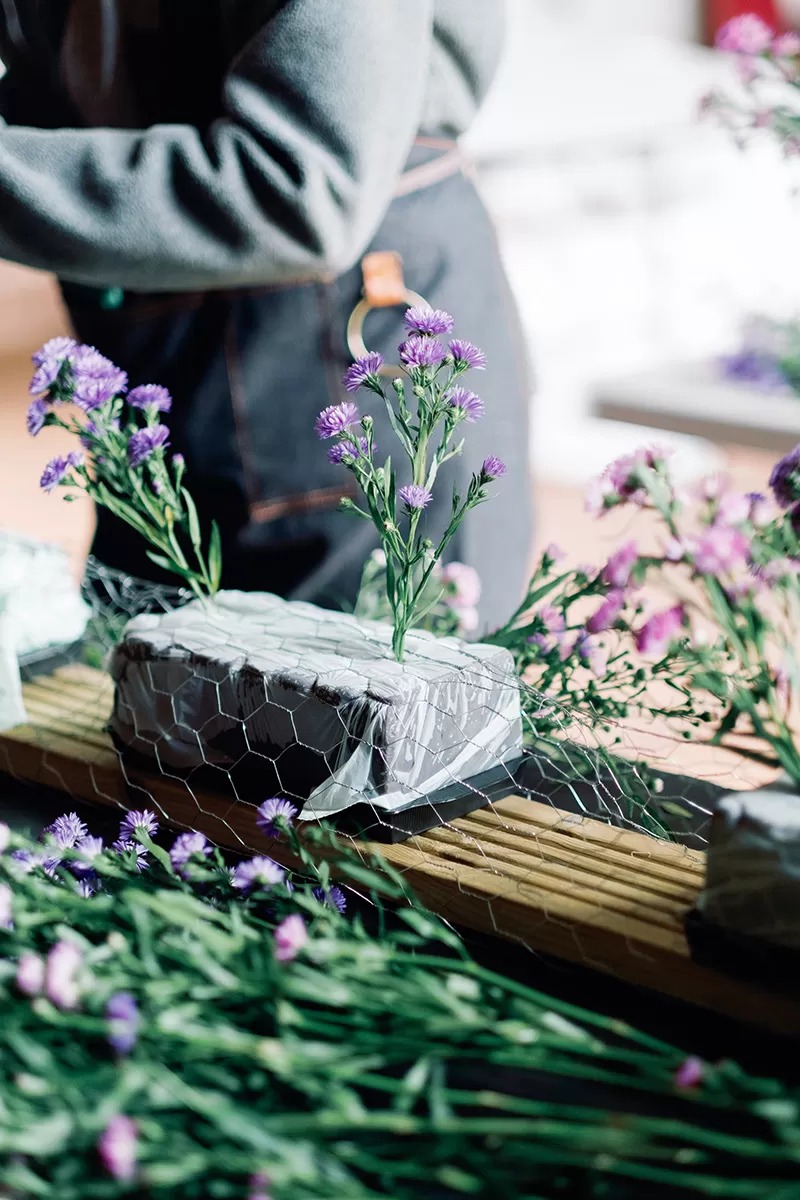
Reusable materials
After the event or occasion, the design is easy to adapt and repurpose as a floor meadow. This showcases the adaptability of this sustainable floral design, making it suitable for various occasions, particularly weddings.
All the mechanics used in this floral table runner, including the wood plank, wire netting, and compostable bags, are reusable. The compostable bags and any plant-based materials can be composted, while other recyclable components should be appropriately recycled, promoting an eco-friendly approach to floral design.
Floral Design: Sabine Darrall
Photography: Emma Pilkinton
